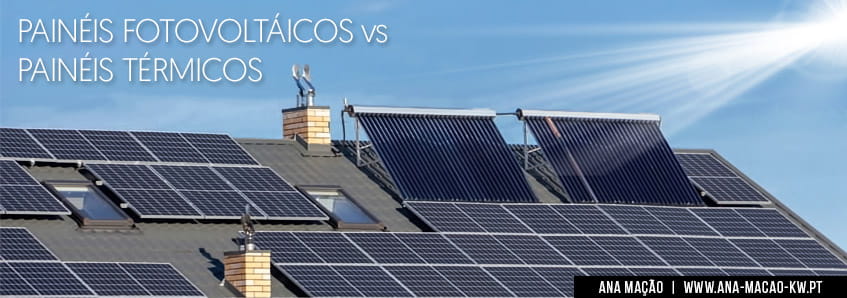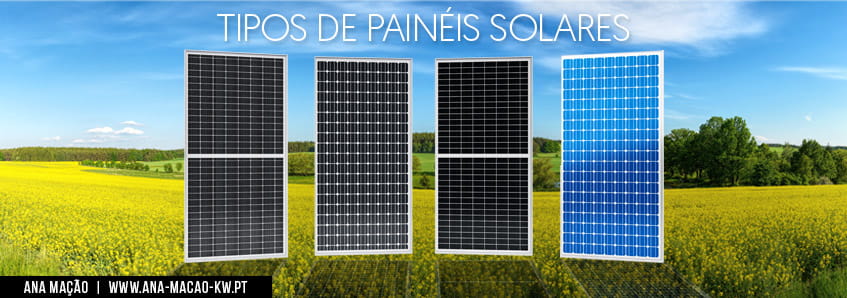At a time when the government has just lowered the VAT rate from 23% to 6% on solar panels, many homeowners are wondering if this is the best time to invest in green energy and put a kit of solar panels on their roofs. Does the investment pay off? How many years does it take to monetize its high cost?
However, there is still a restriction that makes it difficult to monetize the panels, without the sun there is no energy conversion, and consumption is higher during the night. Although there are already panels that can convert night heat into electricity, their efficiency is still low.
Storing unused energy during the day in batteries is an expensive solution and expensive to maintain. It is used in homes that do not have a connection to the electricity grid or when the number of panels and the level of consumption justifies it.
Selling surplus production is a solution that has recently appeared on the market and that increases the profitability of solar panels by 60% . Studies exist that point to a gain between 2 to 3 invoices per year. There are now companies that buy electricity that exceeds domestic consumption, as an alternative to the usual injection into the external grid, which does not bring any benefit to the owner.
Types of solar panels and their efficiency
As this is a topic of a technical nature and a high degree of complexity, I will simplify the approach by summarizing the discussion to 2 types of panels: photovoltaic solar panel and thermal solar panel.

What are Solar Panels for?
Photovoltaic panels are intended to produce electricity based on sunlight and the electricity produced must be consumed immediately unless batteries are used for storage and later consumption.
The thermal panels use solar energy to heat the water that slides smoothly behind the panels, which is stored in tanks for later use in the sanitary facilities of the house.
Types of solar panels

There are several technologies used in the manufacture of solar panels, namely:
| Details | monocrystalline | polycrystalline | Mono-PERC (Bifacials) | Thin film |
| Cost | High | Medium | Very high | Lower |
| Efficiency | High | Average | Very tall | Smaller |
| Appearance | Black/Darkest color with octagonal shape | Blue color with square edges | black borders androunded | Depends on the variant |
| Benefits | energy efficiency heat resistant |
Accessible less waste |
More efficient Less space needed |
Lower installation cost Light |
| Disadvantages | expensive high carbon footprint |
low callus resistance Low energy efficiency |
More expensive | shorter lifespan lower efficiency |
Although there is an array of technologies associated with solar panels, the choice should fall on the most efficient type of panels .
The degree of efficiency measures the conversion rate between the solar energy that falls on the panel and the electrical energy or heat produced.
Considering that the useful life of each panel varies between 20 and 30 years , the more efficient the panels, the faster they will be amortized and the greater the return on investment.
However, the more recent the technologies used, the greater the efficiency , but the greater the cost. Currently, panels using monocrystalline technology are the most used and have a very good efficiency.
As the focus on these technologies has been growing exponentially, new features appear every day, initially more expensive but which, over time, quickly replace the previous ones. An example of this are the hybrid panels , recently arrived on the market, which are capable of producing thermal and electrical energy simultaneously , saving space and dispensing with the use of 2 types of solar and thermal panels.
Another example of this evolution concerns the degree of efficiency and electricity produced by the most recent panels. Due to the investigation of new materials and glass of superior technology, in the last decade we have been witnessing an exponential increase in efficiency gains, which has been evolving year after year.
Just a few years ago the panels had efficiencies of 16% and produced 160 to 200W of electricity each. Currently, the most installed panels have efficiencies of 19% and produce 300W each. Recently, Chinese companies are homologating panels in Europe with efficiencies of 23% producing 700W of electricity , each panel!
Wasting surplus energy is a bad solution
Although the panels produce more and more electricity, occupying the same space, energy waste is great, and the national energy grid gains from the energy not consumed by the owners.
But since January 14, 2020, when the new self-consumption law was passed ( Decree-Law No. shared between self-consumers and their production units for self-consumption.
Thus, since that date, more and more owners have withdrawn some money from the excess production of their panels by selling it to electricity suppliers.
On the websites of the main suppliers there is no lack of advertising campaigns to promote the purchase of solar energy solutions. The offer, in addition to the panels, includes “free installation” and the possibility for the investment to be made “without interest and without any initial investment”.
In addition to these arguments, the operators remind their customers that the VAT rate on solar panels has dropped from 23% to 6% and that, therefore, the final price is also cheaper.
The main objective of investing in a production unit for self-consumption (UPAC) is to reduce the electricity bill at the end of the month. But it's not the only one.
Several vendors of UPAC kits advance that, on average, the return on this investment will be reached between seven to ten years. But these accounts are highly subjective, as they are heavily dependent on the ratio of use of energy produced by solar panels: the greater the consumption of solar energy production, the lower the electricity bill at the end of the month and the faster the return. investment in panels.
The problem is that it is very difficult for a family to consume all the energy produced by the solar panels, since there are several periods during the day when the production is greater than the energy consumption of the house. And when that happens, in most cases, the surplus production is injected into the network for free.
To prevent this from happening, some families end up buying batteries. In this way, the surplus of solar energy production is stored so that it can be consumed later. It is an insightful and logical solution, but it still requires a large investment. In a small UPAC, with an installed power of 1800 watts (six 300w panels), for example, this investment is hardly justified. That's why most consumers see the investment in a solar kit only as a solution for self-consumption and don't even worry about what they produce too much. But would that view change if they knew that between 60% and 70% of the energy that solar panels produce is delivered to the grid for nothing?
The good side of rising electricity prices
According to an academic work developed by five researchers and published in 2016 in the magazine “Applied Energy”, for an average European family, the ratio of use of energy produced by solar panels for self-consumption, in the absence of batteries, varies between 30% and 37% .
According to the researchers, the value tends to be slightly higher in southern European countries. In other words, no matter how efficient the management of the energy produced by the solar panels, most of it is delivered to the grid.
And if the majority of Portuguese people with UPAC still deliver this surplus to the network for free, since 2020, with the approval of the new self-consumption law), there are also more and more people who withdraw some money from the excess production of their panels by selling them. o to electricity suppliers.
According to the Energy Services Regulatory Authority (ERSE), 29 electricity suppliers are currently operating on the market, offering offers to domestic consumers. However, according to an analysis of the market by ECO, there are only 4 traders who buy the surplus production of small-scale UPACs: Coopérnico, JafPlus, Ezu Energy and LuzBoa.
Most of these suppliers are willing to purchase surplus production at a fixed price per megawatt-hour (Mwh) or based on a price indexed to the value per MWh practiced in the Iberian wholesale electricity market (Mibel), which is published daily by OMIE , plus a supplier management fee.
According to the offers currently in force, the pricing model proves to be of very little benefit to the consumer's wallet, compared to the indexed pricing model. While the price offered by suppliers in the fixed price model varies between 40 and 60 euros per MWh, in the case of the indexed price model it is situated at 145 euros per MWh, considering the average price at Mibel in the last 12 months.
Taking as an example a UPAC with an installed power of 1800w with a utilization rate for self-consumption of 40%, which translates into an average excess production of 130 kilowatt-hours (kWh) per month, opting for the fixed model, the sale of the surplus production would generate 94 euros per year (about 7.8 euros per month). Opting for the indexed price model, the family budget would earn 226 euros per year (about 19 euros per month), the equivalent of two or three electricity bills.
Among the proposals of the four operators that buy the surplus production at a price indexed to consumers, the LuzBoa and Ezu Energia offers stand out. Both have a management cost of 20%. Coopérnico's offer also has the same management cost, but as it is a cooperative, the surplus purchase service is only available to members. And to become a cooperator it is necessary to spend 60 euros to acquire three capital bonds. In the case of the JAFplus offer, the management cost is 35%.
How to sell surplus production to the network
The process of selling surplus production is relatively simple. The first step is to hire a certified professional to install a UPAC with a power greater than 350w.
Then it is necessary to ensure that it has a bidirectional meter so that the energy produced by the panels can be processed and, in the process of selling the surplus production, the meter can register bidirectionally every 15 minutes (counting period of the surplus that is injected on the network). The replacement of the old meter by the new “smart” meter will have to be requested from e-Redes.
The next step is to register the UPAC with the Directorate-General for Energy and Geology (DGEG), to obtain the registration of mere prior communication or the operating certificate (if the installed power exceeds 30kw) - some UPAC installation companies are responsible for if for this bureaucracy.
To sell the production surplus it is also necessary to open an activity in Finance. You can do so through the Finance portal and choose code 35133 of the Economic Activities Code (CAE). If the amount raised from the sale of surplus production is less than 12,500 euros per year, it is exempt from VAT and there is exemption from withholding income tax. The same happens for those who already have an activity open and in the previous year did not earn more than 12,500 euros.
Finally, all you have to do is sign a contract for the purchase and sale of surplus energy with a supplier and send all the documentation. It does not need to be the same supplier from whom you buy electricity. You can enter into an electricity purchase agreement with one operator and a sales agreement with another.
In this way, in addition to using solar panels to cut the electricity bill every month, you will also end up seeing your bank account get a little more fat with the sale of excess energy that you don't consume. It is a “two in one” that considerably increases the return on investment of solar panels.



